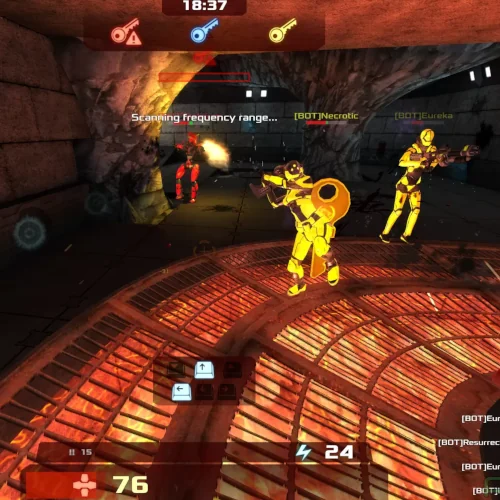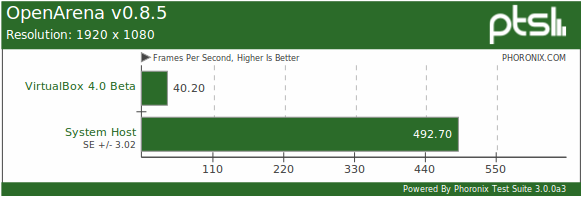VirtualBox 4.0 OpenGL Gaming Performance

VirtualBox does provide support for OpenGL acceleration in guests as well as 2D/video acceleration. For Microsoft Windows guests, there's also Direct3D acceleration support. The VirtualBox graphics acceleration requires an accelerated GPU driver to be installed on the host (obviously) and then also the guest operating system to have the Oracle VM VirtualBox "Guest Additions" to be installed. Contained within this VirtualBox guest software for Windows/Solaris/Linux operating systems is a graphics driver that allows passing the OpenGL/Direct3D to the host system.
The VirtualBox 2D/3D acceleration though isn't quite as nice as VMware's implementation, which is based upon Gallium3D. VMware guests have not only Direct3D/OpenGL acceleration on the graphics processor, but any Gallium3D state tracker could be utilized such as OpenVG and OpenGL ES. The VMware implementation with Gallium3D is also more efficient (not to mention that VMware also owns the Tungsten Graphics developers responsible for Mesa / Gallium3D). There's also a Gallium3D driver for Xen virtualization, but sadly there's no such 2D/3D support for QEMU/KVM.
Without accelerated GPU support for QEMU/KVM, we hadn't ran any 3D virtualization tests in the article from this morning. However, for your pleasure, below are two OpenGL gaming tests from the same system. There's the performance of the host compared to VirtualBox 4.0 Beta 2 with this Intel Core i7 970 CPU + NVIDIA GeForce GTX 460 system.

While VirtualBox has guest 3D acceleration, its implementation is significantly slower than running OpenGL on the host with the proprietary NVIDIA Linux driver. At least though it's a fairly playable experience (above 30 FPS average), but it's with a lightweight, ioquake3-powered game.

The World of Padman performance was about the same too. While the virtualized gaming performance lags behind, there's at least some level of support and it's enough to power a composited desktop.
8 Comments

